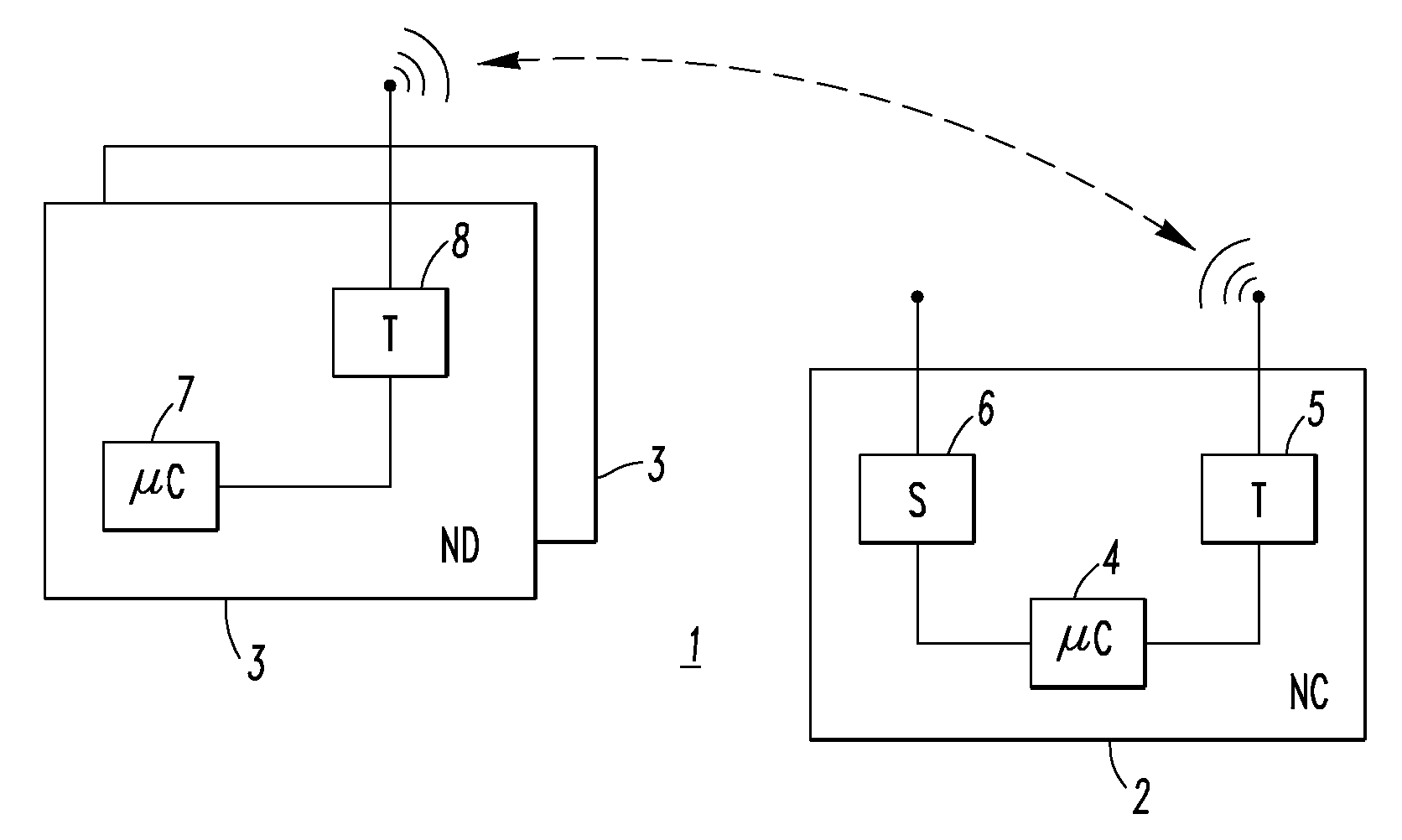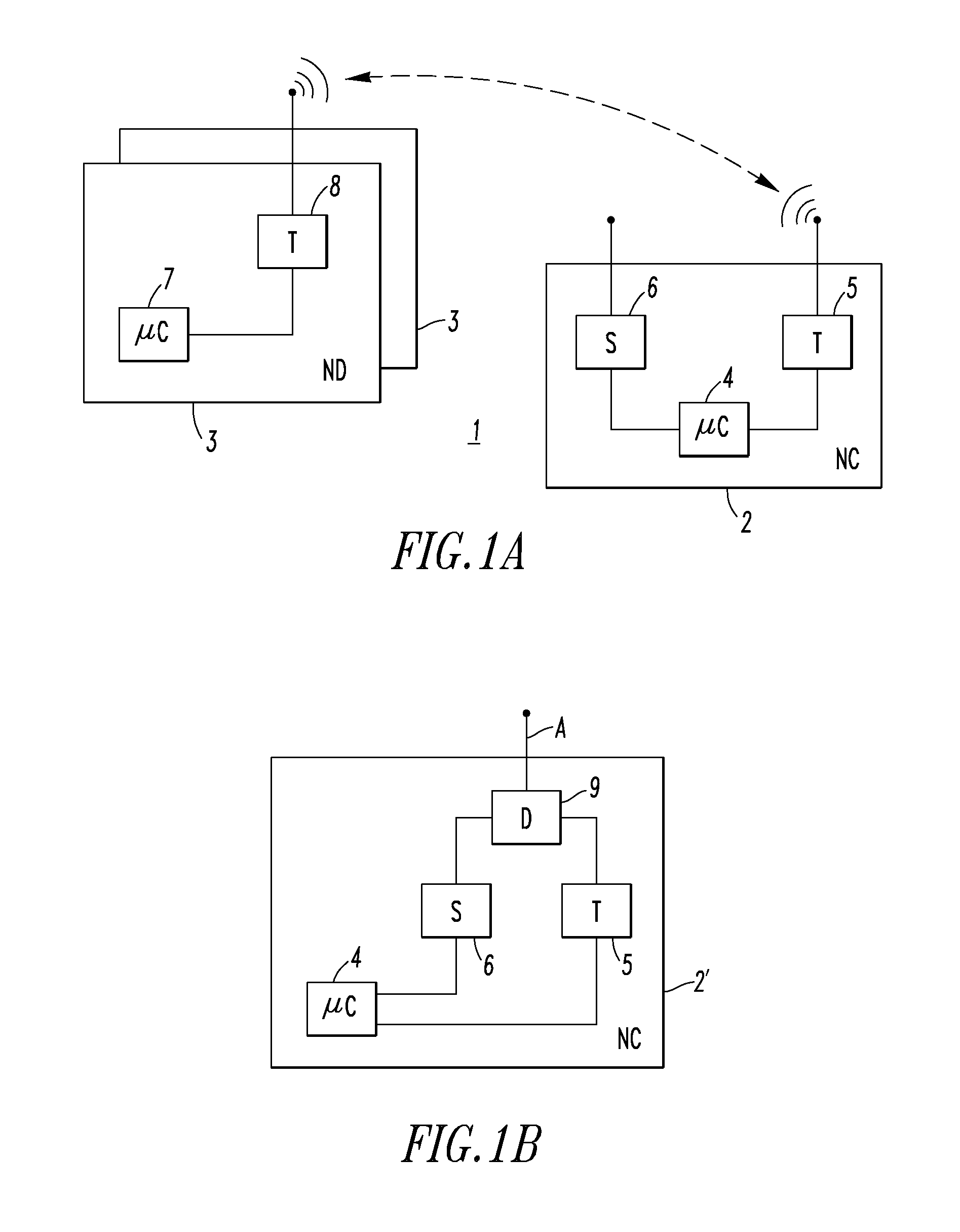Wireless communication network and method of dynamic channel selection of a wireless communication network
- Summary
- Abstract
- Description
- Claims
- Application Information
AI Technical Summary
Benefits of technology
Problems solved by technology
Method used
Image
Examples
example 1
[0044]The second radio S 6 (e.g., including only a receiver) of FIG. 1A or 1B is in receive only mode, and could potentially use the same antenna A as the first radio T 5 through the use of a simple duplexer D 9 of network coordinator 2′, as shown in FIG. 1B.
example 2
[0045]If a power amplifier (PA) (not shown) is used to transmit, then the radio receivers of the radios 5,6 must be disabled (e.g., switched out) during transmission to prevent excess power from damaging the circuitry. For example, the example radio T 5 employs a single channel for transmit and receive (half duplex); hence, “listen-while-talking” is not supported. It may also be necessary to disable the receiver of the second radio S 6 during transmit by the first radio T 5 to avoid adjacent channel desensitization (as shown in FIG. 6).
[0046]Referring to FIG. 2, a Future Channel Assessment (and Selection) Algorithm 10 is shown. Here, the second radio S 6 (e.g., receiver) of the NC 2 of FIG. 1A is employed to monitor the background noise level of each channel, and preferably maintain a log for one or both of the following parameters: (1) rolling average of RSSI (Receive Signal Strength Indicator); and (2) peak RSSI in or about, for example, the last 24 hours.
example 3
[0047]For example, the RSSI value provides a general indication of the amount of background noise in the corresponding channel. The higher the RSSI value, the stronger the received signal. If the second radio S 6 is receiving background noise, then it is desired that the background noise be relatively low. Conversely, when a packet (message) is received, the first radio T 5 takes an RSSI reading that indicates the strength of the received signal (i.e., a higher RS SI value is better in this instance). After all channels are scanned, as shown in FIG. 2, one technique for selecting the best Future channel (FUTURE_CH) is to simply pick the channel that has the lowest rolling average RSSI (e.g., the channel that has the lowest average background noise). The channel with the second lowest rolling average RSSI (FUTURE_CH′) can also be identified.
PUM
 Login to View More
Login to View More Abstract
Description
Claims
Application Information
 Login to View More
Login to View More - R&D
- Intellectual Property
- Life Sciences
- Materials
- Tech Scout
- Unparalleled Data Quality
- Higher Quality Content
- 60% Fewer Hallucinations
Browse by: Latest US Patents, China's latest patents, Technical Efficacy Thesaurus, Application Domain, Technology Topic, Popular Technical Reports.
© 2025 PatSnap. All rights reserved.Legal|Privacy policy|Modern Slavery Act Transparency Statement|Sitemap|About US| Contact US: help@patsnap.com



